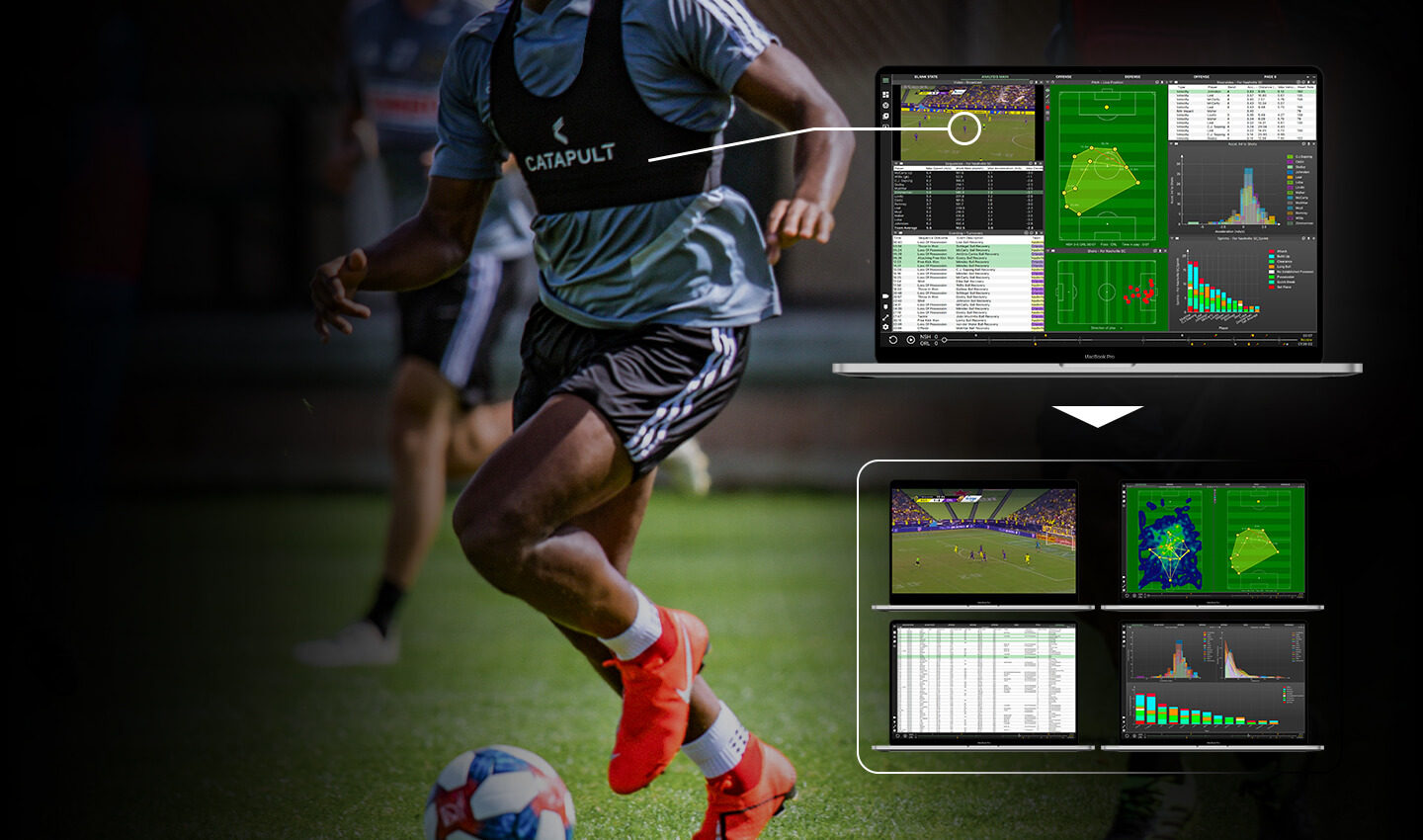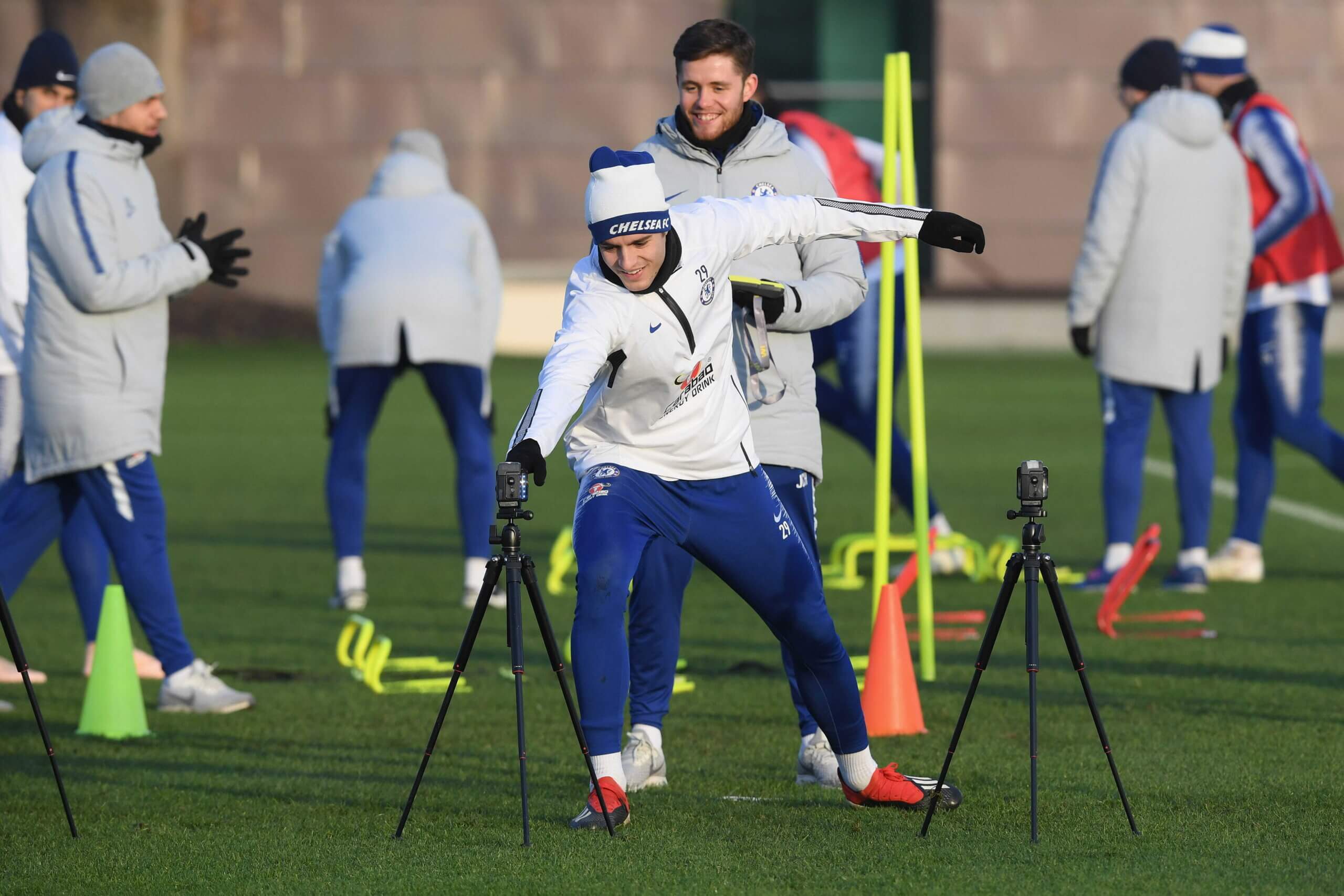5 Sports Performance Predictions from Chelsea FC
We recently posted a blog which detailed how Chelsea FC is reaping the rewards from adding context to performance data using Catapult.
Following this insight we asked Jack Christopher and Elliott Axtell, the Premier League club’s Head of Academy Sports Science and Physical Fitness and U23 Lead Athletic Development Coach respectively, to share their predictions for the future of team analysis.
Here are their top 5 sports performance predictions for technology, analysis processes, and practitioners:
1. Contextualised performance insights
“Younger generations are more receptive to video, and we can now show the players the movements they should be doing and what their intensity should be,” said Jack.
“Additionally, we can show examples of others doing it, allowing us to get the message across much easier and bridge the gaps between opinion and insight.”
In February 2022, Catapult released the integration of performance data and video allowing football teams to contextualise the physical outputs of every phase of play, empowering them to optimise training sessions with more certainty and accuracy than before.
→ Click here to request a free demo of Performance Data + Video.

2. Measuring physical profiles and their influence on technical performance
“Using player-specific data, it would be great to see how the physical profile of athletes impacts their technical performance. For example, how developing a player’s physical ability to break stride and change direction impacts their counter-attacking, one vs one, and duelling skills … Over time, measuring this change will enable us to more accurately profile and, therefore, develop our players,” said Jack.

3. Assessing movement strategy on-pitch
Another development would be the ability to assess movement strategy through GPS tracking more effectively.
“This could be particularly useful when seeing a player’s movement and their relationship with fatigue,” said Jack.
“This way you could determine how the quality of their movement changes as players fatigue across games and training. A development like this would also positively impact an analyst’s role in the return-to-play process.”

4. Fitness testing using tracking data
“Somewhat linked to the ability to assess movement, being able to test fitness directly using the wearable tracking technology would be beneficial. Right now, we need to set up separate tests, like the bleep test, to determine the fitness of our players. But doing this using the technology would make things more seamless,” explained Elliott.
5. Improving the real-time analysis experience is the future of team analysis.
“The last change I see is the improvement of the real-time experience. Using the same words as before, you get more context and the ability to influence live/in-game,” suggested Jack.
“Currently, this can be done with the Catapult’s thresholds tab. So now, you can set targets before the session and see in real-time whether they’re coming through into their targets. But there is space to grow the real-time analysis process.”
→ To ready yourself for these 5 sports performance predictions, click here to contact the Catapult team, today.
5 Trends to Keep Your Eye On In 2023
The sports performance and technology industry is an exciting and rapidly growing field that is having a profound impact on the world of sports. With the help of advanced technology, athletes are able to train smarter, perform better, and mitigate the risks of injuries.
From wearable technology to advanced data analysis, here at Catapult, we are passionate about building the future of sports performance and technology to drive innovation and improve athletic performance, and we are committed to helping our teams and athletes navigate this exciting industry.
In doing so, we asked members of our customer success team to share what trends to keep an eye on in 2023. By clicking below, we take a closer look at some of the key trends and innovations in this industry and explore how they are helping athletes to push the limits of performance.